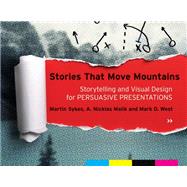
Note: Supplemental materials are not guaranteed with Rental or Used book purchases.
Purchase Benefits
A. Nicklas Malik is an enterprise strategy architect for Microsoft in the United States and a well-respected leader, speaker, and writer in the field of Enterprise Architecture. Key to his success has been the use of visual stories, a technique he learned from Martin's early training sessions. Nick has used the CAST process in settings ranging from founding a small business to influencing corporate executives.
Mark D. West is a graphic designer and educator, with experience developing successful training and graphic design solutions for retail and IT-based clients in the US Pacific Northwest (including Boeing and Microsoft) over the last 15 years. Numerous design colleges and IT-based clients have benefited from his expertise in design to support organizational effectiveness, learning, and results that stick.
Visual Stories 5
Should We Blame the Tools? 6
Finding the Right Tool for the Job 6
To Be Effective, You Have to Affect People 7
Convincing Evidence 10
2 CAST AND THE VISUAL STORY MAP 12
The Visual Story Map 12
3 USING CAST TO TELL STORIES 22
Use the Visual Story Map 23
Learn From Our Experience 24
Examples of Using CAST 25
Build Your Own Example 25
Example 1: Personal Trainer 26
Example 2: City University Hospital 27
Tell the Right Story 29
Tell the Story Right 29
4 WHY 34
The Three Big Whys 35
Focusing First on “Why” 36
All Motivation is Personal 37
Techniques for Discovering Whys 37
Five Whys 38
Pain Chain 40
Outcome Mapping 41
5 WHAT 48
Elements of Change. 50
Brainstorming the Changes 52
Filter and Focus 53
6 HOW 62
Traceability and Milestones 64
Finding the “How” 65
Understanding the Dependencies 68
Cum hoc ergo propter hoc 70
7 WHAT IF 76
Walking Backward Through the Story 78
Alternative Scenarios 80
Final Thoughts on the Story Content 89
8 WHO 92
Finding the Common Ground 96
Creating a Power Map 98
9 LEARNING AND DECISION STYLES 108
Categorizing Your Audience 109
Preferences, Not Prescriptions 109
Learning Styles 110
Decision Styles 112
10 STRUCTURE 122
Plot Structure 123
Nesting and Embedding (or How to Tell Many Stories at the Same Time) 139
Using Reality and Fiction 139
Hope’s Story 141
Putting All the Parts Together 141
In a Hurry? 143
11 CHARACTER 148
The Hero and the Villain 150
Character Associations 152
Believability 153
The Cast of Characters 154
Personification 154
12 SENSE OF URGENCY 164
The Enemies of Change: Complacency and Distraction 165
Common Factors Creating a Sense of Urgency 166
Success Is a Decision 168
Success Is a Commitment 168
13 DELIVERY PLAN 174
Decisions Take Time 176
Planning for Scale 178
Hook, Line, and Sinker 179
City University Hospital 180
Delivery Tips 186
14 DESIGN 192
Intentional Design 193
Many Formats, One Root 196
The Infographic 197
Ideation 198
Composition 200
Content Coding 209
Writing 214
15 TEST 222
Testing and Rehearsals 223
Opening, Closing, and Timing 224
Repetition 225
Retention 225
The Six Key Tests 226
16 CAST EXAMPLE: WHAT A DIFFERENCE A DAY CAN MAKE 232
17 AFTERWORD: IMPROVING YOUR VISUAL STORYTELLING 242
Practice Makes Perfect 242
Use Your Tools. 243
REFERENCES 246
INDEX 252
The New copy of this book will include any supplemental materials advertised. Please check the title of the book to determine if it should include any access cards, study guides, lab manuals, CDs, etc.
The Used, Rental and eBook copies of this book are not guaranteed to include any supplemental materials. Typically, only the book itself is included. This is true even if the title states it includes any access cards, study guides, lab manuals, CDs, etc.